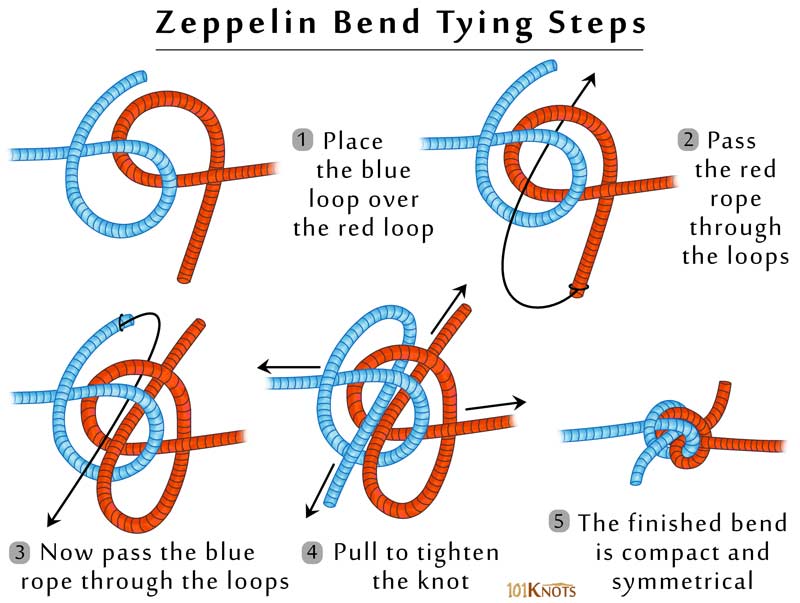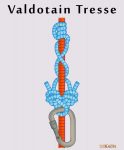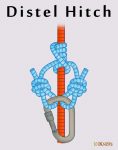Zeppelin Bend
The Zeppelin bend or the Rosendahl bend is a secure and simple knot that is mainly used to connect 2 ropes for climbing. There is some history, or rather, a myth surrounding its name. The massive strength yet easy to untie even after heavy loading property of the bend was utilized to tie down huge lighter-than-air ships or dirigibles filled with helium or hydrogen that dated back to the 1920’s. Having huge lifting capacities, these airships were commonly known as “Zeppelins” in honor of their pioneer, Count Ferdinand von Zeppelin. Hence the name of the knot. It is said to have been invented by a US naval officer named Rosendahl who first used it for the above purpose.
How to Tie a Zeppelin Bend
Tips
- Though it may take more time to tie it in the first few attempts, the process becomes faster with practice.
Variation
- Double Zeppelin bend – The working end of each rope can be taken around and through twice instead of once to create this.
Advantages | Disadvantages |
|
|
Uses
- Rock climbing
- By wilderness survival enthusiasts
- The tying method can also be adapted to make a Zeppelin loop, a highly secure fixed loop at the end of a line. It is one of the few loops suitable for bungee cords.
Steps to Tying a Zeppelin Bend
- Place the blue loop over the red loop
- Pass the red rope through the loops
- Now pass the blue rope through the loops
- Pull to tighten the knot
- The finished bend is compact and symmetrical








